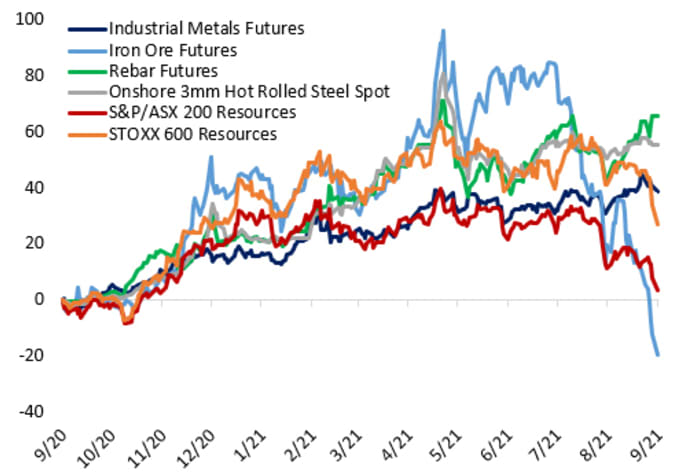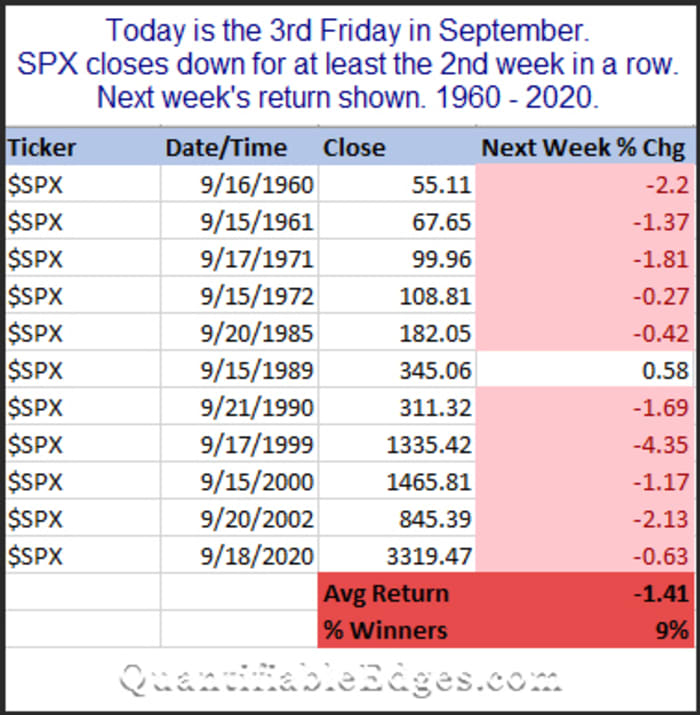This post was originally published on this site
Global stock markets took a decidedly risk-off tone on Monday. The spark was the China Evergrande Group
3333,
crisis. Fears are rising that Evergrande is turning from a liquidity crisis in which the real estate giant doesn’t have enough cash to pay its obligations, to a solvency crisis in which the company’s assets are less than its liabilities if it is forced to fire-sale its properties.
In the U.S., the S&P 500
SPX,
had been largely immune to Evergrande news until Monday. The U.S. benchmark index decisively violated its 50-day moving average. Investors are becoming spooked not only over the possibility of an Evergrande contagion but a looming crisis in Washington over the debt ceiling.
Is this a buying opportunity, or a crack in the dam that foretells disaster?
A domestic crisis
Take a deep breath. An Evergrande collapse is unlikely to spark an emerging market crisis and contagion. That’s because most of the company’s debts are RMB denominated and little is in U.S. dollars and other foreign currencies. Global markets have been relatively unscathed by the crisis. There will be little global contagion effect because it will all be contained in China.
A number of bearish investors have pointed to plummeting iron ore prices as signs of slowing growth in China, which could have global repercussions. But George Pearkes at Bespoke pointed out that steel and other industrial metal prices are still holding up well.

So relax. Any contagion effect will be minimal.
A panic bottom?
In the U.S., the stock market is starting to flash signs of a panic bottom. The Zweig Breadth Thrust Indicator has plunged into oversold territory, which is often a signal of a short-term bottom.
My S&P 500 bottom models are starting to flash buy signals. The five-day RSI is deeply oversold. The VIX Index
VIX,
has surged above its upper Bollinger Band, which is another oversold signal. The term structure of the VIX inverted intraday, indicating fear.
To be sure, this week (the week after September OpEx) is historically the weakest week of the year, as documented by Rob Hanna at Quantifiable Edges. However, Hanna pointed out that the average weekly “weakest week” drawdown is -2.3%. As the S&P 500 was down 1.7% on Monday, the index is nearing its average downside target.

While oversold markets can become more oversold, a bottom is near. Nevertheless, this market isn’t without risk. MarketWatch’s Mark Hulbert studied the stock market’s return in the two weeks prior to debt-ceiling showdowns and returns have been disappointing. As well, the FOMC meeting this week could be a source of volatility.
My inner trader plans to take an initial position on the long side in the S&P 500 at the open on Tuesday. This is a volatile market and traders should size their positions accordingly. Be prepared for a short-term bounce, followed by a retest of the lows later this week or possibly next week.
Cam Hui writes the investment blog Humble Student of the Markets, on which this article first appeared. He is a former equity portfolio manager and sell-side analyst.
More: Why Evergrande has suddenly exploded into a potential global financial market crisis
Plus: Will Evergrande be China’s ‘Lehman moment’? Wall Street says no


